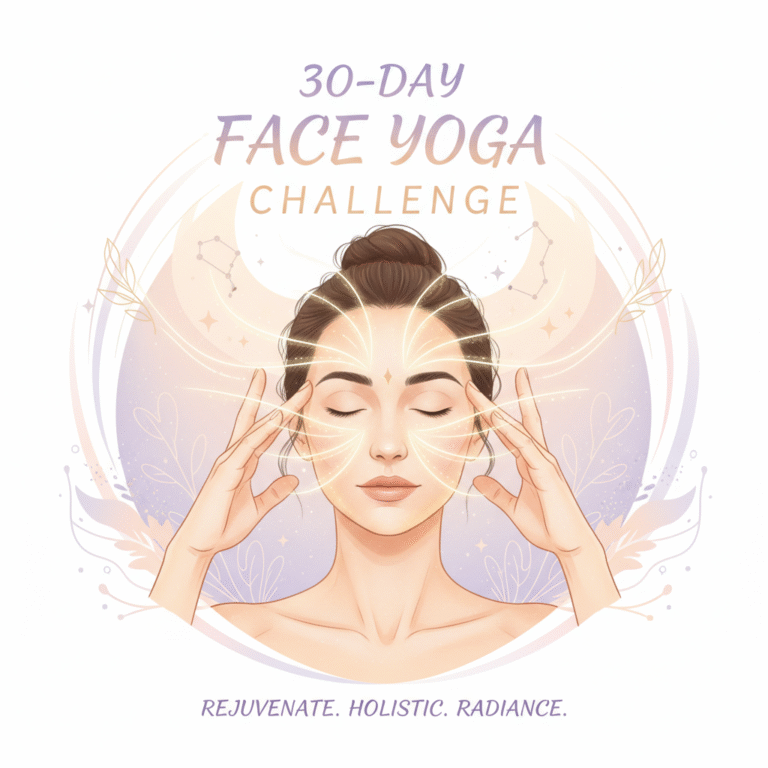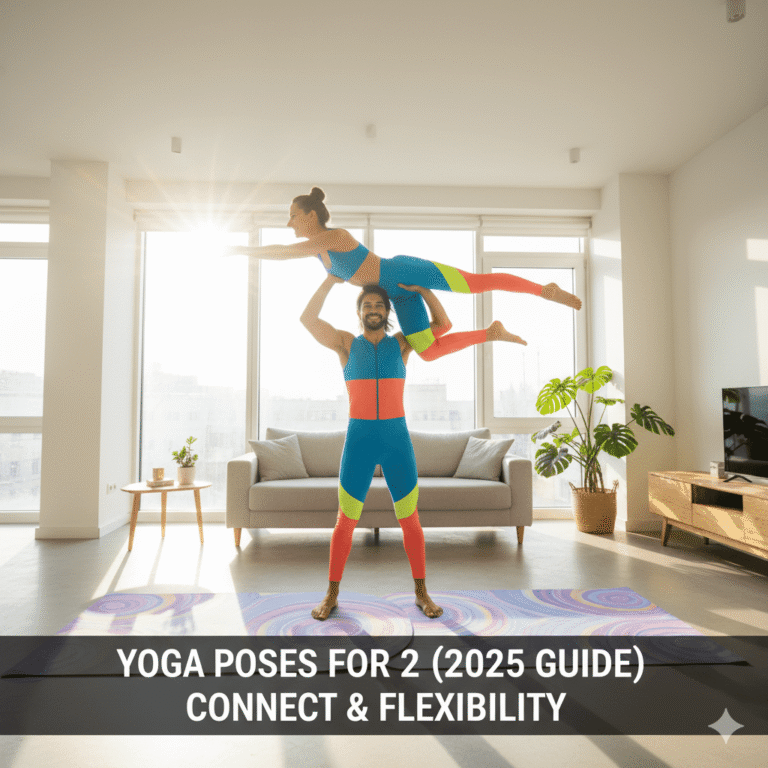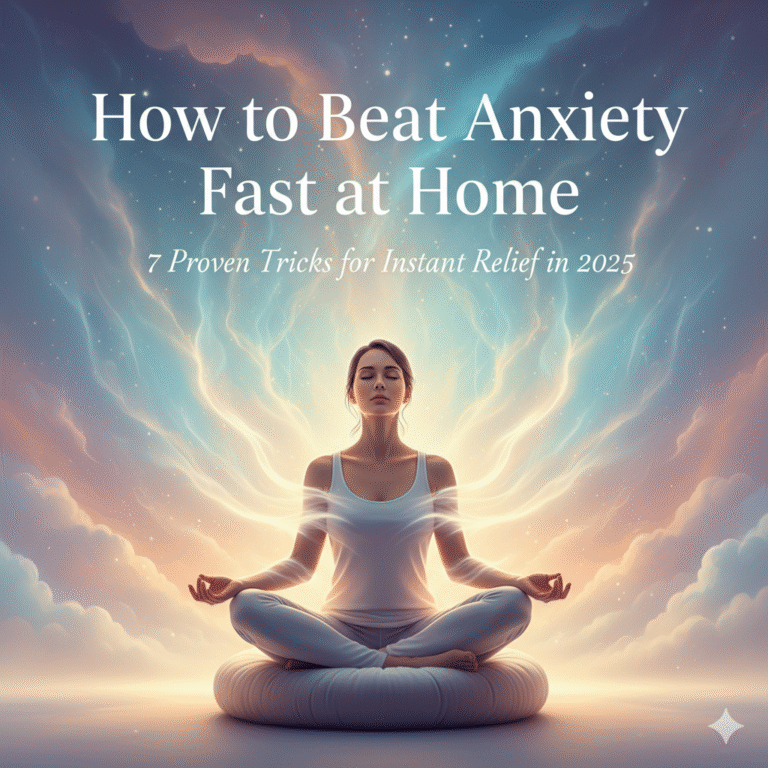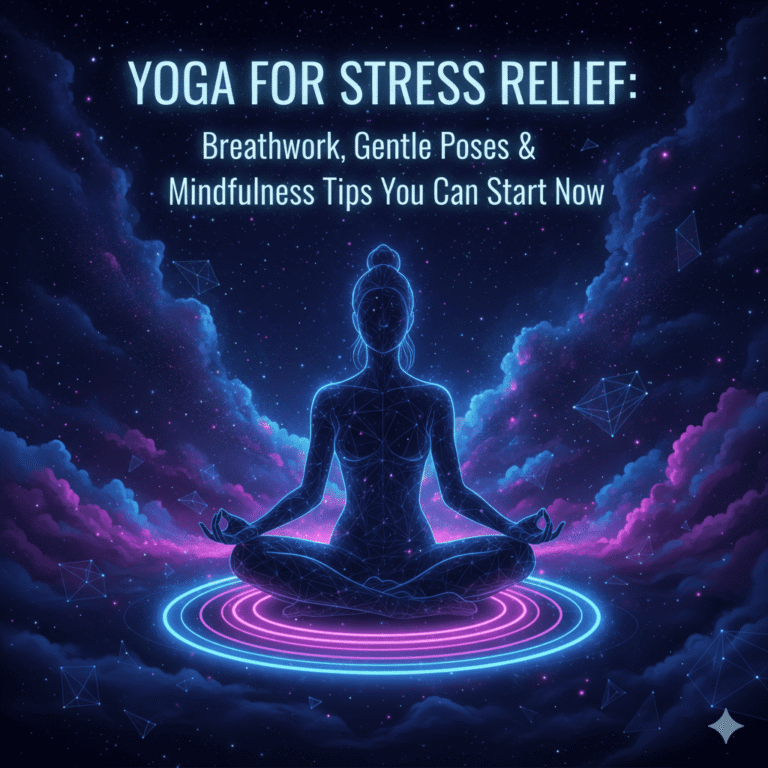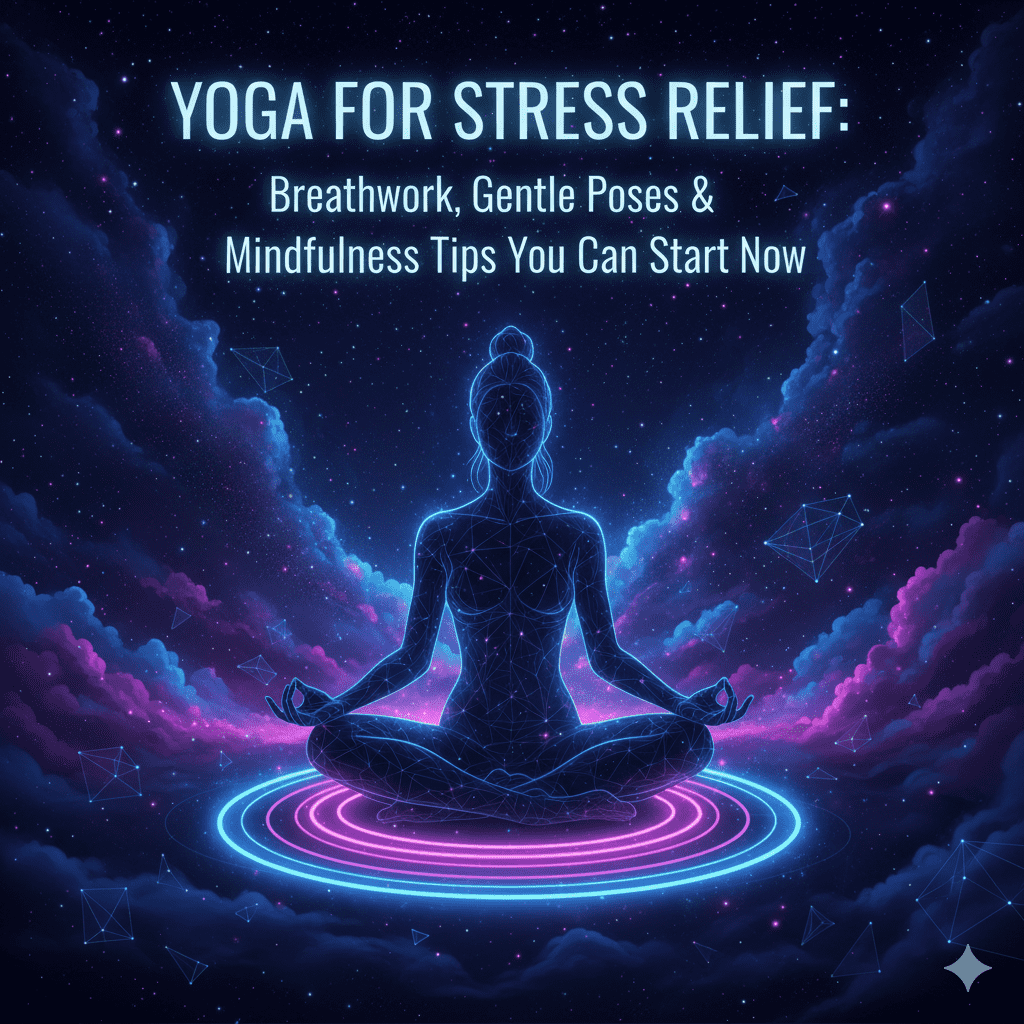
In today’s fast-paced world, stress has become an unavoidable part of daily life. Work pressures, personal responsibilities, and global uncertainties contribute to mental and physical tension. Practicing yoga for stress relief offers a holistic solution, combining gentle movements, breathwork, and mindfulness to reduce stress, improve mental clarity, and enhance overall well-being. This guide explores how you can integrate stress relief yoga into your daily routine to achieve calm, balance, and inner peace.
🌬️ Understanding Breathwork for Stress Relief
Breathwork, or conscious breathing, is the cornerstone of stress management through yoga. The way we breathe influences our nervous system, heart rate, and emotional state. When stressed, our breathing often becomes shallow and rapid, triggering the body’s fight-or-flight response. By practicing controlled breathing techniques, you can activate the parasympathetic nervous system, which helps the body relax naturally.
Some simple techniques include diaphragmatic breathing, alternate nostril breathing, and 4-7-8 breath exercises. Regular practice of these yoga breathing exercises for stress relief reduces cortisol levels, calms the mind, and enhances focus. Incorporating breathwork at the beginning of your yoga session primes the body for deeper relaxation and prepares the mind to engage fully in gentle yoga for stress relief.
🧘♂️ Gentle Yoga Poses That Soothe the Mind and Body
Engaging in gentle yoga poses helps relieve physical tension while also fostering mental clarity. These poses are suitable for beginners and experienced practitioners alike. Yoga poses for stress and anxiety typically involve stretching, slow movements, and poses that promote mindfulness.
Some of the most effective poses include Child’s Pose, which calms the mind and stretches the back, and Cat-Cow Pose, which gently mobilizes the spine. Legs Up the Wall Pose reduces anxiety and fatigue, while Seated Forward Bend soothes the nervous system. Incorporating these poses into a daily practice can create a consistent routine that supports mental health.
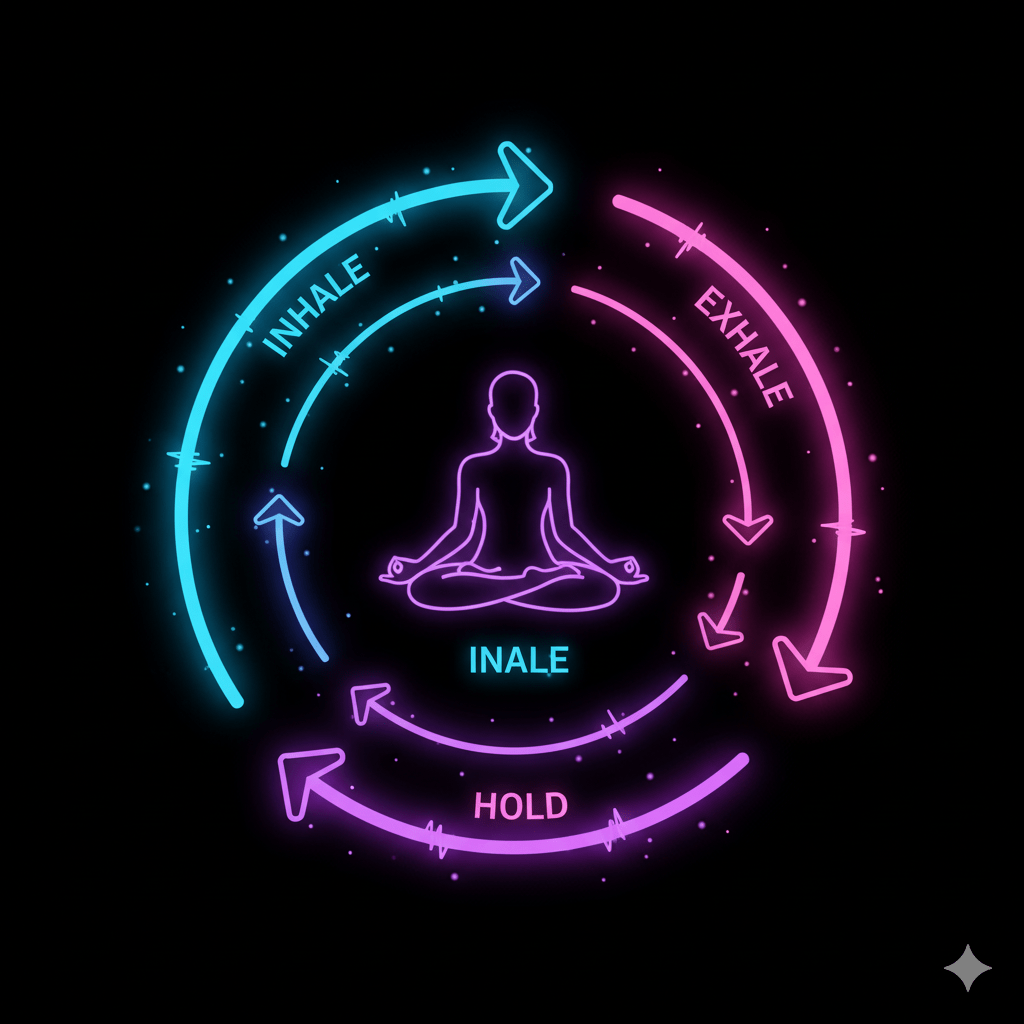
Gentle Poses Benefits
- Reduces muscle tension and physical stress
- Improves flexibility and posture
- Promotes relaxation and calmness
- Enhances circulation and energy flow
- Encourages mindfulness and mental focus
By practicing these poses mindfully, you not only reduce stress but also cultivate a deeper connection between body and mind.
🧘♀️ Mindfulness Practices in Yoga
Mindfulness yoga for relaxation emphasizes staying present and fully experiencing each movement and breath. This approach helps reduce the impact of stress by training the mind to focus on the current moment instead of worrying about past or future events.
Incorporating meditation, guided visualization, or silent observation during your yoga practice encourages awareness and emotional regulation. Mindful breathing paired with gentle movement enhances the calming effect of yoga for anxiety and stress. Over time, regular mindfulness practice fosters resilience, improves mood, and promotes a sense of inner balance.
🛌 Bedtime Yoga for Better Sleep
Sleep plays a critical Fporole in stress management. Practicing bedtime yoga for stress and better sleep helps calm the nervous system, release tension, and prepare the body for restorative rest. A short routine of gentle stretches, deep breathing, and progressive muscle relaxation can dramatically improve sleep quality.
By prioritizing sleep alongside yoga for stress relief, you support mental clarity, boost immunity, and enhance overall well-being. Over time, these habits create a virtuous cycle: better sleep reduces stress, and reduced stress improves sleep quality.

🌿 Creating a Stress-Relief Yoga Routine
Consistency is key to managing stress effectively with yoga. A balanced stress relief yoga routine can include breathwork, gentle poses, mindfulness practices, and meditation. Start with short sessions of 10-15 minutes and gradually increase duration. Choose a quiet environment, use props like blocks or cushions for comfort, and listen to your body to avoid strain.
Tips for Building a Routine
- Begin with 10–15 minute sessions and gradually extend time
- Dedicate a quiet, distraction-free space for practice
- Incorporate breathwork and mindfulness at the start and end
- Use props like mats, blocks, or cushions for comfort
- Track progress and adjust the routine to suit your needs
This structured approach ensures that you remain consistent and derive maximum benefits from your practice.
📈 Integrating Yoga Into Daily Life
The benefits of stress relief yoga are amplified when integrated into daily life. Even brief moments of mindfulness or a few gentle stretches during breaks can help maintain balance and reduce tension. Incorporate mini yoga sessions in the morning to energize the day, during lunch breaks for a mental reset, or before bedtime to promote relaxation. Combining regular practice with mindful breathing, posture awareness, and meditation creates a sustainable lifestyle that counters daily stressors.

🧘♂️ Conclusion
Yoga for stress relief is a versatile and effective tool for managing both mental and physical stress. By combining breathwork, gentle poses, mindfulness, and consistent practice, you can reduce anxiety, improve focus, and enhance overall well-being. Start small, stay consistent, and gradually expand your routine to include more advanced poses and mindfulness techniques. Over time, this holistic approach will not only alleviate stress but also foster a balanced, healthier lifestyle.
Can beginners do stress relief yoga effectively?
Yes! Gentle yoga for stress relief is suitable for beginners. Most poses are easy to learn and can be adapted to individual needs. Starting with simple poses and short breathwork exercises can gradually build strength, flexibility, and mindfulness without causing strain.
Do I need special equipment for practicing yoga at home?
You don’t need much. A yoga mat is recommended for comfort and stability, especially for floor poses. Props like blocks, straps, or cushions can enhance your practice but are not mandatory. What matters most is finding a quiet space and focusing on your breath and movements.
Can yoga help with anxiety and improve sleep quality?
Absolutely! Regular practice of stress relief yoga, combined with breathwork and mindfulness techniques, helps reduce anxiety, lower cortisol levels, and relax the nervous system. Bedtime yoga routines, including gentle stretches and calming poses, can significantly enhance sleep quality.
How soon will I notice benefits from yoga for stress relief?
Many people report feeling calmer and more relaxed after just a few sessions. However, consistent practice over weeks or months brings the best long-term benefits, including improved mental clarity, emotional balance, better sleep, and a general sense of well-being.

